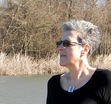Mari Serebrov's Blog - Posts Tagged "holocaust"
The Other German Genocide
“There are German leaders, like August Bebel, who speak out against the dangers of a racial pride that flows forward from the Crusades to be fueled by today’s ‘science’ of eugenics. A pride that’s the foundation of a national policy that says all other people, by divine right, are to be valued only for their service to the German empire. And if their best service is extermination, so be it.
Mari Serebrov
“This time it was the Herero and the Namas. How do I know that, in the future, it won’t be the Jews again?” – Kov, in "Mama Namibia"
Less than 40 years after the Kaiser unleashed the first genocide of the 20th century in German South West Africa, that same racial pride fueled the Holocaust.
Bent on erasing the Jews, the Nazis employed many of the techniques used to eradicate the Herero and Nama – death camps, starvation, medical experiments, rape, and denial. And just as it did in 1904, the rest of the world looked away.
Today, the nations of the world honor the victims of the Holocaust through monuments, museums, and organized remembrances. But they have forgotten the victims of Germany’s other genocide.
“Mama Namibia” seeks to change that. The first novel to tell the Herero story, “Mama Namibia” shows the human cost of genocide through the eyes of a 12-year-old Herero girl and Kov, a Jewish doctor serving in the German army.
Mari Serebrov

“This time it was the Herero and the Namas. How do I know that, in the future, it won’t be the Jews again?” – Kov, in "Mama Namibia"
Less than 40 years after the Kaiser unleashed the first genocide of the 20th century in German South West Africa, that same racial pride fueled the Holocaust.
Bent on erasing the Jews, the Nazis employed many of the techniques used to eradicate the Herero and Nama – death camps, starvation, medical experiments, rape, and denial. And just as it did in 1904, the rest of the world looked away.
Today, the nations of the world honor the victims of the Holocaust through monuments, museums, and organized remembrances. But they have forgotten the victims of Germany’s other genocide.
“Mama Namibia” seeks to change that. The first novel to tell the Herero story, “Mama Namibia” shows the human cost of genocide through the eyes of a 12-year-old Herero girl and Kov, a Jewish doctor serving in the German army.



